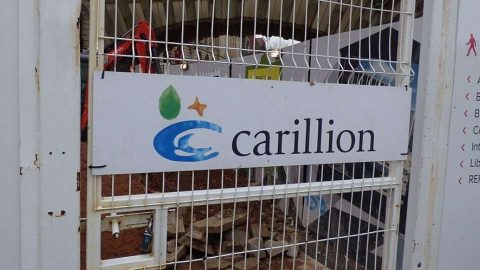How to deal with asset impairment
In these challenging times where businesses are facing tremendous disruption due to the coronavirus, there will be some assets that are showing indicators of impairment and which may need to be written down to recoverable amount by way of an impairment loss in the entity’s financial statements.
This could be particularly the case with an asset such as goodwill where a subsidiary has been significantly affected by the effects of the pandemic.
FRS 102 The Financial Reporting Standard applicable in the UK and Republic of Ireland deals with impairment of assets in Section 27 Impairment of Asset. FRS 102, Section 27 also includes requirements for inventory and goodwill.
An entity is required to first assess whether an asset (including goodwill) is showing indicators of impairment and, if it is, calculate the recoverable amount. ‘Recoverable amount’ is defined in the Glossary to FRS 102 as:
| The higher of an asset’s (or cash-generating unit’s) fair value less costs to sell and its value in use. |
Where recoverable amount is lower than carrying amount, the asset is written down to recoverable amount by way of an impairment loss which is recognised in profit or loss.
Goodwill
Goodwill is dealt with in FRS 102, Section 19 Business Combinations and Goodwill. There are specific impairment requirements relating to goodwill in FRS 102, paragraphs 27.24 to 27.27 that a group will need to carefully consider (this article cannot cover all the requirements of these paragraphs).
FRS 102 acknowledges at paragraph 27.24 that goodwill does not generate independent cash inflows and therefore it must be tested for impairment as part of a cash-generating unit (CGU). A ‘cash-generating unit’ is defined in the glossary to FRS 102 as:
| The smallest identifiable group of assets that generates cash inflows that are largely independent of the cash inflows from other assets or group of assets. |
Examples of CGUs include an individual hotel in a chain; individual branches of a retailer and individual restaurants in a chain of restaurants. Each of these individual entities would be classed as a CGU because they generate their own revenue.
In a group context, a subsidiary would normally be designated as a CGU.
Where a parent does not wholly-own a subsidiary, FRS 102, para 27.26 requires the goodwill to be grossed up to include goodwill attributable to the non-controlling interest (NCI) before conducting the impairment review.
It is the notionally adjusted goodwill figure which is then aggregated with the other net assets of the CGU. The aggregate amount is then compared to the recoverable amount to determine the value of any write-down.
|
Example – Notionally adjusted goodwill
Topco Ltd owns 80% of Subco Ltd and the group has an accounting reference date of 31 March each year. On 31 March 2020, the carrying amount of Subco’s net assets were $880,000, excluding goodwill of £120,000 (net of amortisation). Due to the coronavirus, management has decided that they will have to restructure the group and announced this restructuring exercise immediately prior to the reporting date. The finance director has calculated recoverable amount of Subco’s net assets to be £950,000. FRS 102, paragraph 27.26 requires Topco to notionally adjust the goodwill to take into account the NCI. The impairment loss is calculated as follows:
The impairment loss of £80,000 is allocated against the total notional goodwill of £150,000 with the corresponding debit being recognised in group profit or loss. |
||||||||||||||||||||||||||||||||||||||||||||||||||||||
It must be noted that any impairment losses recognised in respect of goodwill cannot be subsequently reversed, even if the circumstances giving rise to the original impairment loss cease to apply (FRS 102, para 27.28).
Other considerations for CGUs
FRS 102, para 27.21 requires an impairment loss to be allocated to a CGU in the following order:
- first to the goodwill allocated to the CGU; then
- to the other assets of the unit pro-rata on the basis of the carrying amount of each asset in the CGU.
Be careful of the restriction in FRS 102, para 27.22. This states that an entity cannot reduce the carrying amount of any asset in a CGU below the highest of:
- fair value less costs to sell (if determinable);
- value in use (if determinable); and
- zero.
FRS 102, para 27.23 then says that any excess amount of the impairment loss which cannot be allocated to an asset because of the above restriction must be allocated to the other assets of the unit pro-rata on the basis of the carrying amount of those other assets.
|
Example – Allocating an impairment loss
The Ratchford Group is a clothing retailer. One of its subsidiaries, Charnley Clothing Ltd, suffered a fire during the lockdown and management have decided to close the store permanently and redeploy staff to other stores. 40% of the machinery was destroyed but the remaining 60% can be sold. The carrying amount of Charnley’s assets are as follows:
An independent surveyor has suggested a selling price of £1.6m could be achieved for the building. The finance director has calculated a recoverable amount for the CGU (being the subsidiary) of £2.5 million. 40% of the machinery was destroyed in the fire therefore 40% of the carrying amount should be written off immediately (i.e. £340,000) which leaves a carrying amount for the machinery of £510,000 (£850k – £340k). The total carrying amount of the CGU after impairment of the machinery is £2,710,000 (see below). Recoverable amount is £2.5m so a further impairment loss of £210,000 is needed. This is allocated first to goodwill and then to the other assets in the CGU on a pro-rata basis (FRS 102, para 27.21). Goodwill of £100,000 is written off in full leaving £110,000 to allocate. So, for example, the amount attributable to licences is £53,000 ((250 / (250 + 220 + 48)) x 110). There should be no further impairment to the machinery because these have already been written down to their recoverable amount. In addition, the impairment loss cannot be set against the building because its fair value is greater than its carrying amount (£1.6m as suggested by the independent surveyor) so the restriction in FRS 102, para 27.22(a) applies. The monetary asset (cash at bank) is also not affected by the impairment because this will be realised at full value. The impairment is allocated as follows:
|
With the exception of goodwill (see earlier), impairment losses on other assets can be reversed when the circumstances giving rise to the original impairment loss cease to apply. However, FRS 102, paras 27.29 to 27.31 restrict the amount of the impairment loss that can be reversed. Consideration also needs to be given as to whether recoverable amount was estimated for an individually-impaired asset (FRS 102, para 27.30) or whether it was estimated for a CGU (FRS 102, para 27.31).
Effectively, for fixed assets, a previously recognised impairment loss can only be reversed to the extent that it brings the asset back up to the value it would have been stated at (net of depreciation/amortisation) had no impairment loss originally been recognised, so do be careful of this restriction to avoid overstating assets and impairment reversals. In most cases, the value of a subsequent impairment reversal will be less than the original impairment loss because of this restriction.
For inventory, FRS 102, para 27.4 limits the impairment reversal to the amount of the original impairment loss to prevent inventory being valued in excess of cost.













